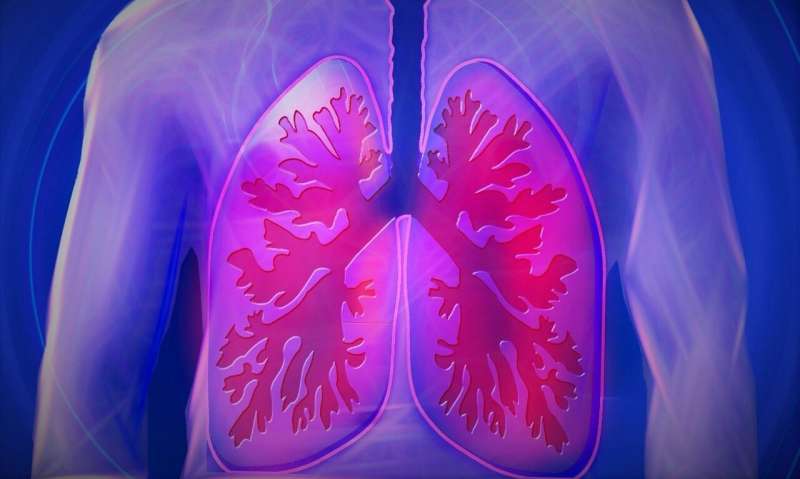New CT scan analysis predicts respiratory illness and death in COPD

CT scans of the lungs of smokers with chronic obstructive pulmonary disease—when analyzed by a mathematical function called airway fractal dimension—can estimate increased risk of death for a group of people who are not otherwise identified as high-risk by conventional tests.
That is a major finding of clinical importance in a Journal of Clinical Investigation study led by senior author Surya Bhatt, M.D., and first author Sandeep Bodduluri, Ph.D. "We showed that a significant number of smokers without airflow obstruction—who would be considered to have mild or no disease by traditional classification schema—can be identified to have high mortality risk based on grouping using fractal dimensions and peribronchial emphysema," Bhatt said.
Bhatt is associate professor and Bodduluri an instructor in the Division of Pulmonary, Allergy and Critical Care Medicine in the University of Alabama at Birmingham Department of Medicine.
A fractal is a pattern that repeats at successively smaller scales. Trees are an example—limbs separate to large branches, then progressively through thinner branches and finally twigs, all in repeating patterns. Lungs also develop in a fractal pattern with successively smaller scales that is specific to each individual. Large bronchi split to progressively thinner bronchi that end in 300 million tiny air sacs called alveoli, and altogether, the alveoli in an adult lung have nearly the surface area of a tennis court. Bhatt and colleagues found that fractal analysis of COPD lungs delivers additional information that can tell a patient's risk of greater illness or death.

COPD, which is caused primarily by smoking, is characterized by airway remodeling—including narrowing of bronchial lumens and loss of branches. Current analysis of CT scans does detect these changes individually at each branching generation; but this new study by Bhatt and colleagues shows that calculation of airway fractal dimension, or AFD, can be used to quantify this loss of airway branching complexity.
In a cohort of more than 8,000 smokers, the researchers demonstrated that AFD was significantly associated with airflow obstruction and respiratory morbidity, as well as with lung function decline, after adjustment for traditional measures of airway narrowing.
Specifically, they found that AFD was significantly associated with forced expiratory volume in one second, or FEV1, after adjusting for variables that include age, race, sex, smoking status and pack-years of smoking.
Bhatt and colleagues also found that AFD was associated with respiratory quality of life, as reported through a standard questionnaire, and with how far a patient with COPD can walk in six minutes. That six-minute distance decreases with worsening disease; the most severely ill COPD patients may achieve as little as 150 feet in six minutes of walking.
The researchers also found that AFD was associated with COPD exacerbations, lung function decline and mortality, as seen in follow-ups with a median duration of more than six years.
COPD is a disease of airflow obstruction that steadily worsens over time, making it more and more difficult to breathe. Millions of people in the United States have the disease, and about 150,000 die each year.
More information: Sandeep Bodduluri et al. Airway fractal dimension predicts respiratory morbidity and mortality in COPD, Journal of Clinical Investigation (2018). DOI: 10.1172/JCI120693

















